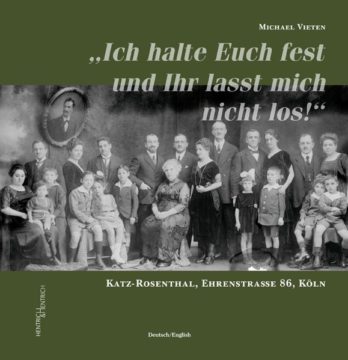“Katz-Rosenthal? Of course I know them. They were butchers with several shops, and quite well-known around Cologne. As far as I know they were Jews.“ This is usually followed by an awkward silence. A common response among the few elderly inhabitants who experienced their city before the Second World War, and affectionately call it “Old Cologne“. They rarely have an answer when asked what happened to the Jewish business owners during the Nazi era. When the author moved to Ehrenstraße 86 a few years ago, he had never heard of Katz-Rosenthal. When he heard of a former tenant in his house who had committed suicide and had been one of the business‘ owners, he began investigating what people had lived in the house that was his new home 80 years ago, and what fates had played out in these rooms. It marked the beginning of an elaborate search for traces of the Katz-Rosenthal business and family, whose existence was under siege by the “mouse incident” in the “Westdeutscher Beobachter” as early as 1928, instigated by Robert Ley who would go on to become Reichsleiter of the NSDAP as well as the united federation Deutsche Arbeitsfront.
This book is not a novel, though it could undoubtedly deliver the necessary material. Rather it is a sorting, compilation and interpretation of family-historical sources whose authenticity must be preserved as much as possible.
- Veröffentlicht am Donnerstag 25. April 2024 von Hentrich und Hentrich Verlag Berlin
- ISBN: 9783955653644
- 280 Seiten
- Genre: Autobiographien, Biographien, Geschichte, Sachbücher
